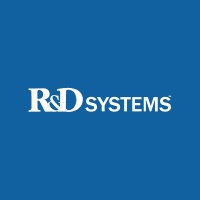Nectin-4 Monoclonal / Alexa Fluor 594 / 337516
Product Details
| Description | Human Nectin-4 Alexa Fluor 594-conjugated Antibody | |
|---|---|---|
| Conjugate | Alexa Fluor 594 | |
| Clone | 337516 | |
| Target Species | Human | |
| Applications | FC | |
| Supplier | R&D Systems | |
| Catalog # | Sign in to view product details, citations, and spectra | |
| Size | ||
| Price | ||
| Antigen | ||
| Host | ||
| Isotype |
About Nectin-4
This gene encodes a member of the nectin family. The encoded protein contains two immunoglobulin-like (Ig-like) C2-type domains and one Ig-like V-type domain. It is involved in cell adhesion through trans-homophilic and -heterophilic interactions. It is a single-pass type I membrane protein. The soluble form is produced by proteolytic cleavage at the cell surface by the metalloproteinase ADAM17/TACE. The secreted form is found in both breast tumor cell lines and breast tumor patients. Mutations in this gene are the cause of ectodermal dysplasia-syndactyly syndrome type 1, an autosomal recessive disorder. Alternatively spliced transcript variants have been found but the full-length nature of the variant has not been determined.[provided by RefSeq, Jan 2011]
This gene encodes a member of the nectin family. The encoded protein contains two immunoglobulin-like (Ig-like) C2-type domains and one Ig-like V-type domain. It is involved in cell adhesion through trans-homophilic and -heterophilic interactions. It is a single-pass type I membrane protein. The soluble form is produced by proteolytic cleavage at the cell surface by the metalloproteinase ADAM17/TACE. The secreted form is found in both breast tumor cell lines and breast tumor patients. Mutations in this gene are the cause of ectodermal dysplasia-syndactyly syndrome type 1, an autosomal recessive disorder. Alternatively spliced transcript variants have been found but the full-length nature of the variant has not been determined.[provided by RefSeq, Jan 2011]
About Alexa Fluor 594
Alexa Fluor™ 594 (AF594, Alexa 594) has an excitation peak at 590 nm and an emission peak at 617 nm, and is spectrally similar to Texas Red (ThermoFisher Scientific), DyLight™ 594 (ThermoFisher Scientific), iFluor® 594 (ATT Bioquest) and iFluor® 610 (ATT Bioquest), CF®594 (Biotium), and ATTO 594 (ATTO-TEC). Alexa 594 is commonly used for flow cytometry,fluorescence microscopy and super-resolution microscopy. It is very bright, photostable, and pH insensitive.
Alexa Fluor™ 594 (AF594, Alexa 594) has an excitation peak at 590 nm and an emission peak at 617 nm, and is spectrally similar to Texas Red (ThermoFisher Scientific), DyLight™ 594 (ThermoFisher Scientific), iFluor® 594 (ATT Bioquest) and iFluor® 610 (ATT Bioquest), CF®594 (Biotium), and ATTO 594 (ATTO-TEC). Alexa 594 is commonly used for flow cytometry,fluorescence microscopy and super-resolution microscopy. It is very bright, photostable, and pH insensitive.
Experiment Design Tools
Panel Builders
Looking to design a Microscopy or Flow Cytometry experiment?
Validation References
Reviews & Ratings
| Reviews |
|---|
Looking for more options?
192 Nectin-4 antibodies from over 18 suppliers available with over 43 conjugates.





